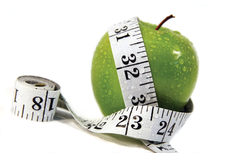Optimize SVG files for websites
Slimming Down

© Lead Image © Sandra Cunningham, Fotolia.com
Inkscape creates W3C-compliant SVG files, but they are usually larger than they need to be for the web. We'll show you how to optimize SVG files for faster load times.
Graphic images can give a website clarity and visual interest, but the web designer must contend with the tax that heavy graphic images place on bandwidth and load time. Photo images are typically scaled down to a lower resolution (and smaller file size) to run on the web, and for other types of image files, smaller is also almost always better.
One way to reduce the size of web images is to rely on vector graphics whenever possible. The Scalable Vector Graphics (SVG) format was originally developed for use on the Internet. Although SVG typically leads to significant economies of scale when compared to pixel graphics, it has taken decades for web developers to become reasonably comfortable with it.
The most popular tool for vector graphics on Linux is Inkscape. You can certainly save some kilobytes by generating graphics files with Inkscape rather than an alternative raster graphics tool like Gimp. But using Inkscape doesn't mean your files will automatically be optimized for the web. This article highlights some steps you can take to reduce the size of vector graphics image files.
[...]
Buy this article as PDF
(incl. VAT)
